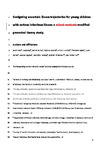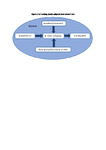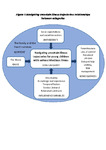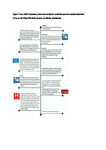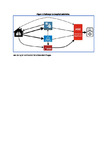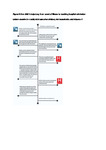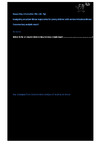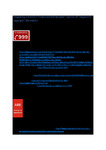Navigating uncertain illness trajectories for young children with serious infectious illness: a modified grounded theory study.
| dc.contributor.author | Neill, Sarah | |
| dc.contributor.author | Bray, L | |
| dc.contributor.author | Carter, B | |
| dc.contributor.author | Roland, D | |
| dc.contributor.author | Carrol, ED | |
| dc.contributor.author | Riches, L | |
| dc.contributor.author | Hughes, J | |
| dc.contributor.author | Pandey, P | |
| dc.contributor.author | O'Donnell, J | |
| dc.contributor.author | Palmer-Hill, S | |
| dc.date.accessioned | 2022-08-12T08:40:58Z | |
| dc.date.issued | 2022-08-30 | |
| dc.identifier.issn | 1472-6963 | |
| dc.identifier.issn | 1472-6963 | |
| dc.identifier.other | 1103 | |
| dc.identifier.uri | http://hdl.handle.net/10026.1/19527 | |
| dc.description | Files replaced (incorrect versions) on 12/8/2022 by KT (LDS). | |
| dc.description.abstract |
Background Infectious illness is the biggest cause of death in children due to a physical illness, particularly in children under five years. If mortality is to be reduced for this group of children, it is important to understand factors affecting their pathways to hospital. The aim of this study was to retrospectively identify organisational and environmental factors, and individual child, family, and professional factors affecting timing of admission to hospital for children under five years of age with a serious infectious illness (SII). Methods An explanatory modified grounded theory design was used in collaboration with parents. Two stages of data collection were conducted: Stage 1, interviews with 22 parents whose child had recently been hospitalised with a SII and 14 health professionals (HPs) involved in their pre-admission trajectories; Stage 2, focus groups with 18 parents and 16 HPs with past experience of SII in young children. Constant comparative analysis generated the explanatory theory. Results The core category was ‘navigating uncertain illness trajectories for young children with serious infectious illness’. Uncertainty was prevalent throughout the parents’ and HPs’ stories about their experiences of navigating social rules and overburdened health services for these children. The complexity of and lack of continuity within services, family lives, social expectations and hierarchies provided the context and conditions for children’s, often complex, illness trajectories. Parents reported powerlessness and perceived criticism leading to delayed help-seeking. Importantly, parents and professionals missed symptoms of serious illness. Risk averse services were found to refer more children to emergency departments. Conclusions Parents and professionals have difficulties recognising signs of SII in young children and can feel socially constrained from seeking help. The increased burden on services has made it more difficult for professionals to spot the seriously ill child. | |
| dc.format.extent | 1103- | |
| dc.format.medium | Electronic | |
| dc.language | en | |
| dc.language.iso | en | |
| dc.publisher | BioMed Central | |
| dc.subject | children under 5 years | |
| dc.subject | health professionals | |
| dc.subject | illness trajectories | |
| dc.subject | parents | |
| dc.subject | Serious infectious illness | |
| dc.subject | uncertainty | |
| dc.title | Navigating uncertain illness trajectories for young children with serious infectious illness: a modified grounded theory study. | |
| dc.type | journal-article | |
| dc.type | Journal Article | |
| plymouth.author-url | https://www.webofscience.com/api/gateway?GWVersion=2&SrcApp=PARTNER_APP&SrcAuth=LinksAMR&KeyUT=WOS:000847683300001&DestLinkType=FullRecord&DestApp=ALL_WOS&UsrCustomerID=11bb513d99f797142bcfeffcc58ea008 | |
| plymouth.issue | 1 | |
| plymouth.volume | 22 | |
| plymouth.publication-status | Published online | |
| plymouth.journal | BMC Health Services Research | |
| dc.identifier.doi | 10.1186/s12913-022-08420-5 | |
| plymouth.organisational-group | /Plymouth | |
| plymouth.organisational-group | /Plymouth/Faculty of Health | |
| plymouth.organisational-group | /Plymouth/Faculty of Health/School of Nursing and Midwifery | |
| plymouth.organisational-group | /Plymouth/REF 2021 Researchers by UoA | |
| plymouth.organisational-group | /Plymouth/REF 2021 Researchers by UoA/UoA03 Allied Health Professions, Dentistry, Nursing and Pharmacy | |
| plymouth.organisational-group | /Plymouth/Research Groups | |
| plymouth.organisational-group | /Plymouth/Research Groups/Plymouth Institute of Health and Care Research (PIHR) | |
| plymouth.organisational-group | /Plymouth/Users by role | |
| plymouth.organisational-group | /Plymouth/Users by role/Academics | |
| dc.publisher.place | England | |
| dcterms.dateAccepted | 2022-07-27 | |
| dc.rights.embargodate | 2022-9-1 | |
| dc.identifier.eissn | 1472-6963 | |
| rioxxterms.versionofrecord | 10.1186/s12913-022-08420-5 | |
| rioxxterms.licenseref.uri | http://www.rioxx.net/licenses/all-rights-reserved | |
| rioxxterms.type | Journal Article/Review |


